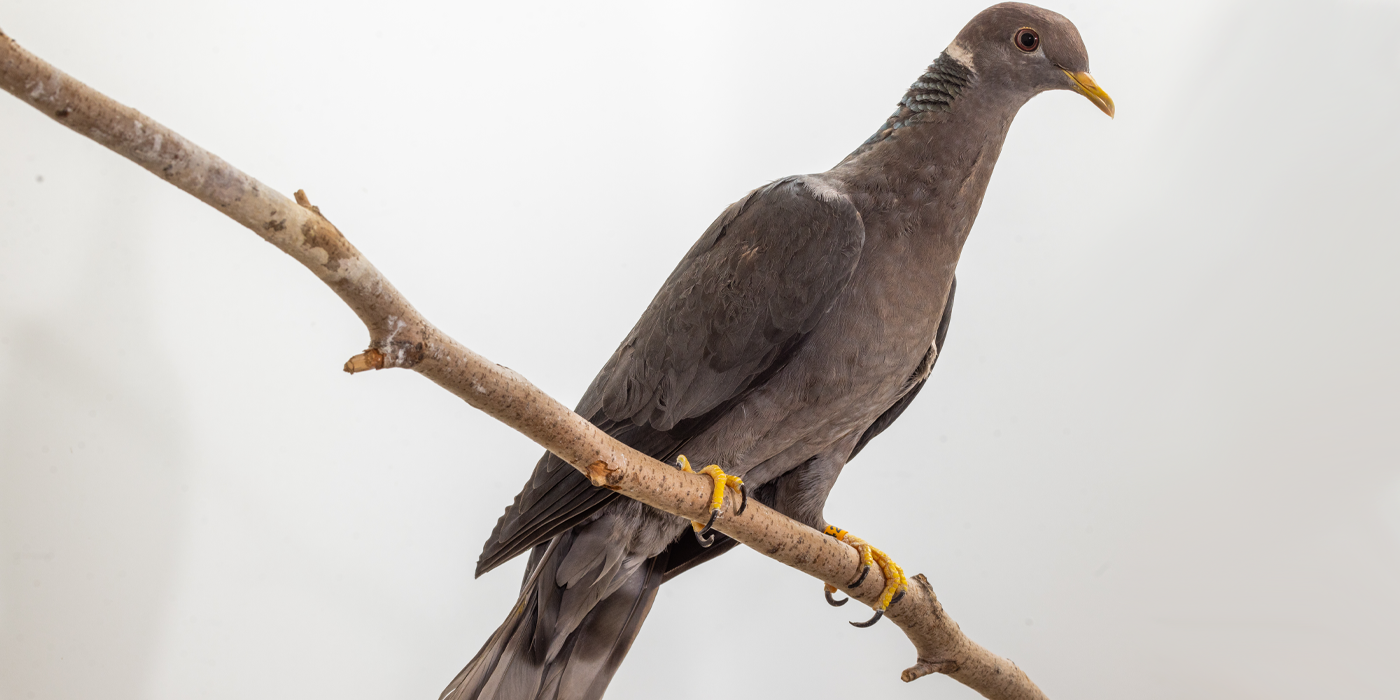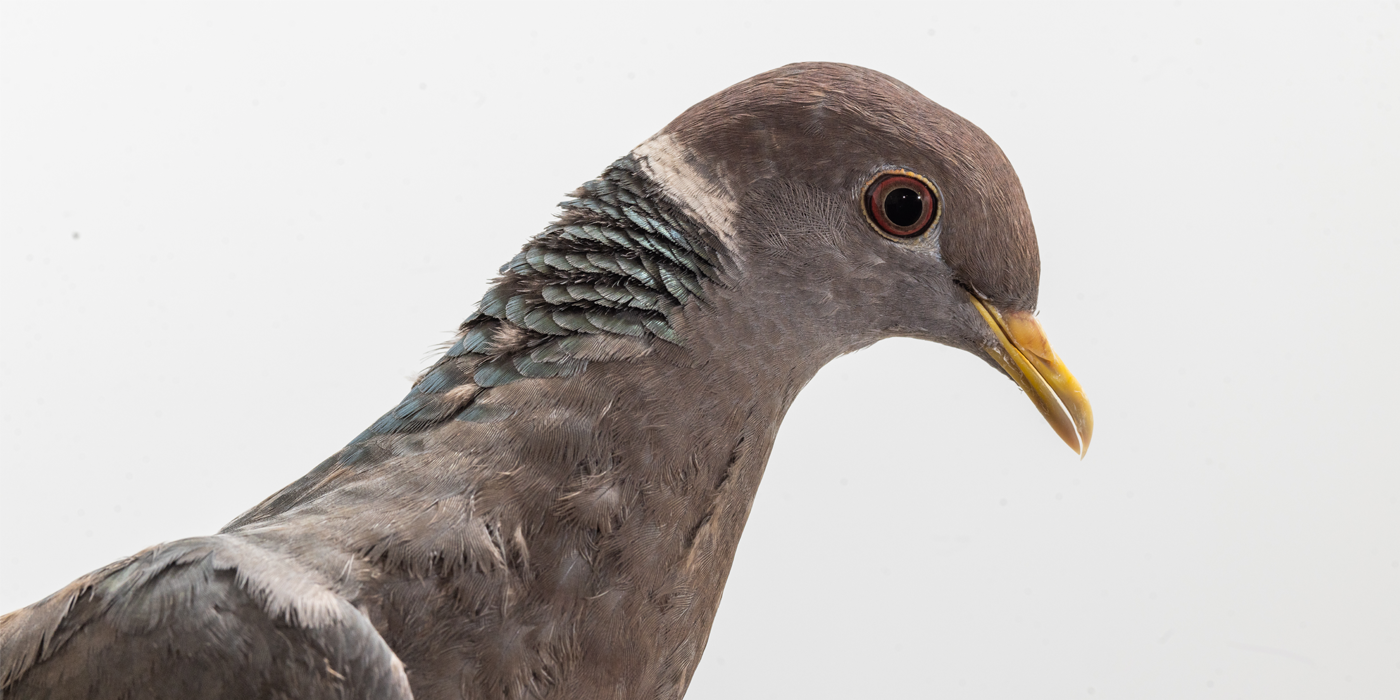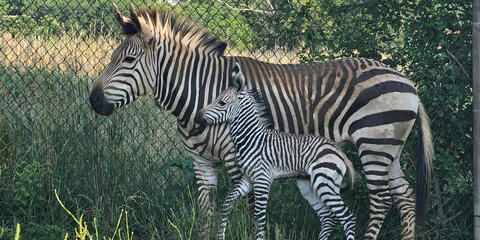Physical Description
Band-tailed pigeons are larger and somewhat chunkier than their cousin, the rock pigeon, although both are marked by pale gray coloration. Adults have small heads, with a white crescent collar and green, scaly-looking feathers on the neck. Their backs are bluish-gray and their underbellies are purple-gray. A dark gray band stretches along the undersides of their tails. Their bills, legs and feet are yellow.
Size
Adults measure between 13 to 16 inches (33 to 40 centimeters) long and weigh 7.9–18.2 ounces (225–515 grams), with a wingspan of 26 inches (66 centimeters).
Native Habitat
They live in mature forests, oak woodlands, and semi-open areas like suburban parks. They are often found high among the treetops.
Year-round populations occur in the mountains and forests of South and Central America, and southwestern parts of North America. Their breeding grounds stretch along the Pacific Coast, through California, Oregon, Washington, and into British Columbia in Canada.
Lifespan
They can live up to 18 years.
Communication
Band-tailed pigeons have a slow, low-pitched, two-note "coo" that sounds almost owl-like.
Food/Eating Habits
Band-tailed pigeons search the forests for fruits, nuts, seeds and occasionally insects, often in large flocks outside the breeding season. They are swift fliers and agile climbers, allowing them to navigate treetops and branches with ease. They are nomadic feeders, passing through areas as food becomes plentiful or scarce, and will range up to 3 miles away from their nests to feed.
Social Structure
They are sociable birds who can often be found foraging and nesting among flocks and small groups.
Reproduction and Development
Pairs of band-tailed pigeons will often build their nests closely together, forming small colonies. After pairing up, females build rudimentary platform nests in trees out of twigs. Eggs are usually laid one at a time, occasionally in pairs. Both parents take turns incubating the eggs, which hatch after about three weeks. Young pigeons leave the nest after about 25-30 days. Adults can raise multiple broods per year.
Both males and females feed their young "crop milk," a nutrient-dense substance that pigeons and doves produce in a section of their lower esophagus called the crop. Somewhat chunkier and more yellow than mammalian milk, pigeon milk contains very high levels of fats, proteins, antioxidants, and immune-enhancing substances. Adult pigeons begin producing this milky liquid a few days before their eggs hatch, and it is regurgitated into their hatchlings’ mouths during the first few weeks of their lives. After that, parents stop producing the substance and start feeding their hatchlings regular softened food (which is also regurgitated into their mouths.)
Conservation Efforts
In the past, band-tailed pigeons were threatened by overhunting, which greatly reduced their population. Their numbers recovered after hunting bans and other protective measures were enacted, but now appear to be declining again. As with many animals, they are threatened by habitat loss and ecosystem degradation.
Help this Species
- Be a smart consumer. Choose products made with sustainable ingredients, such as Smithsonian certified Bird Friendly coffees, which support farmers striving to limit their impact on wildlife and habitat.
- Be a responsible cat owner, and keep cats indoors or under restraint when outside. Never release animals that have been kept as pets into the wild.
- Are you a hunter? You can be an incredible ally for conservation! Check the conservation status of the animals you hunt and use methods that don’t impact other animals.
- Plant native flowers in your garden to help feed resident and migrating pollinators. You'll make your lawn beautiful and help wildlife at the same time!
- Growing, transporting and preparing food uses a lot of resources, so choose local, seasonal produce when possible. A significant amount of food waste also ends up in landfills, so only buy what you can eat.





